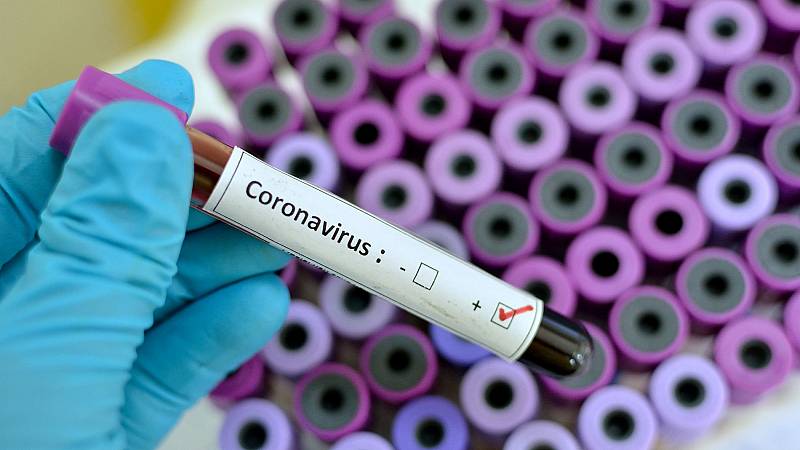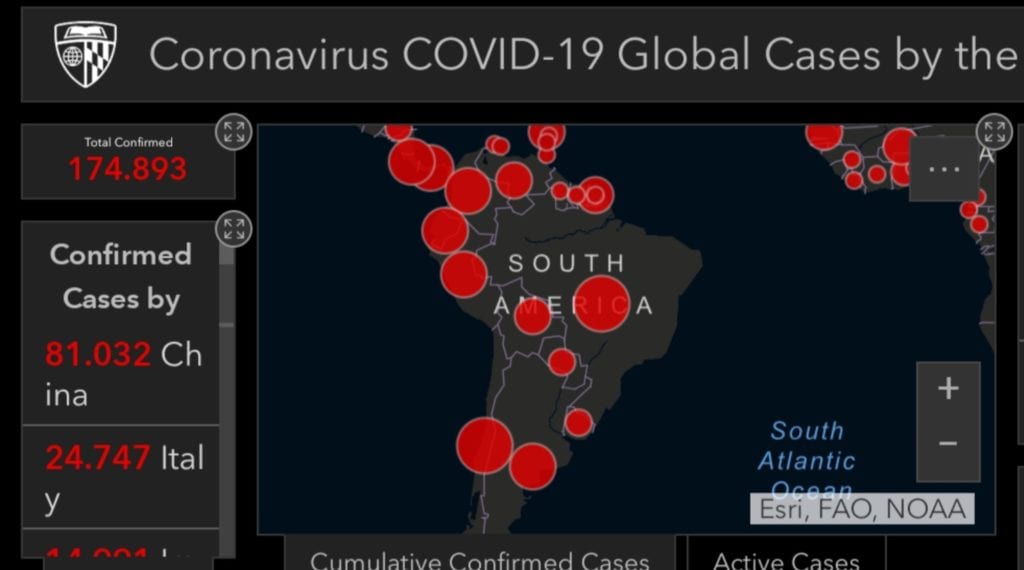Over the past few days, the number of coronavirus infected in South America has continued to grow, and the region’s governments have decided to take very stringent restrictive measures. How do South American countries intend to fight against the pandemic? What economic consequences has South America already faced?
The dangerous coronavirus entered Latin America on February 26, when Brazil confirmed a case of the disease in Sao Paulo. Since then, governments across the region have taken a number of actions to protect their citizens and curb the spread of new types of pneumonia.

As of March 19, most cases of COVID-19 virus infection in South America were recorded in Brazil, but the number of confirmed cases in the region continues to grow, according to data from the ministries of health in the countries of the region.
According to the latest report from the Brazilian Ministry of Health, more than 500 cases have been confirmed in the country, and over 1,200 people are suspected. Chile ranks the second with 348 patients in the fourth phase of the virus. The number of new types of pneumonia infected in Peru has risen to 155. In Argentina, the number of cases is 97 people and 3 deaths. More than 100 cases have already been identified in Colombia, 168 – in Ecuador and 79 – in Uruguay.
The countries with the smallest number of patients with coronavirus are Bolivia and Paraguay. The Ministry of Health of the Plurinational State of Bolivia recorded 15 cases, in Paraguay – 11. Compared to European countries, where thousands of people are already affected, the situation in the South American region is certainly much better. However, the governments of the states and the World Health Organization (WHO) are afraid to repeat the “European experience”, in this regard, from the very beginning they decided to introduce a number of severe restrictive measures.

Since Monday, March 16, all countries in the region have declared a state of emergency and decided to unite in the fight against the dangerous coronavirus. So, what are the common measures introduced by the governments of South American states?
• a ban on holding mass cultural, social, sports and religious events for more than 100 people;
• from March 16 to March 31, classes in educational institutions: schools and universities were suspended;
• the working day for the public and private sectors is now without a traditional break: from 8:00 to 16:00 (in some countries from 8:00 to 13:00);
• curfews have been introduced in some countries: from 6 p.m. to 5(6) a.m.;
• many enterprises transferred their personnel to the remote operating mode;
• until March 31, gyms, cinemas and nightclubs were closed;
• all flights to European destinations were suspended;
• until March 31, foreigners arriving from the risk zone: China, Iran, the Schengen countries (in some cases, all foreign citizens) will not be “allowed” on most land borders between the countries of the region.
In the evening of March 18, some countries have already announced the extension of quarantine until April 31. It is worth noting that the degree of panic in South American countries is not as high as in the EU countries: shelves in stores have not yet been empty, and governments promise that there will be no disruption in food supplies. However, Latinos refrain from kissing when they meet, wash their hands more often and spend more time with their families.

Today, all countries of South America, without exception, have decided to act promptly. The governments have created websites to provide official information about the virus and related measures. In addition, quick response teams are operating in each state, telephone hotlines have been established, and control has been established at airports, ports of entry and land borders. Since Monday, most South American countries have urged their citizens and residents entering the country, arriving from affected or at-risk areas of the world, to establish their own 14-day quarantine, and if the symptoms of the virus develop during this time, patients should go to the medical center.
According to economic analysts, most of all the coronavirus has already hit the tourism sector, because in many countries of South America the high season of visiting the region is now beginning. By the way, since Monday all national parks, tourist attractions and museums have been closed.
However, economic losses have yet to be assessed, not only in South American countries, but throughout the world as a whole. For example, the Brazilian stock market has already fallen by more than 7% after the news of the first case, which was the largest depreciation since May 2017.
Turning to other countries in the region, it is worth noting that China is Argentina’s second largest export destination, and the outbreak of coronavirus has already affected trade. For example, 75% of Argentinean beef exports go to this Asian country, and the value of these exports to China has already fallen by 33.4% from December to January. The Colombian peso has reached a new low, and given that China is Colombia’s third largest trading partner, the quarantine period may slow Colombia’s GDP growth by 0.35%. The Chile’s finance minister, on the contrary, said on March 11 that the economic impact of the outbreak of coronavirus in the region would be limited, although China – the main trading partner of the South American country – is the destination for a third of Chilean exports. According to official figures, the “Citibank” economists raised Chile to the top of the vulnerability index due to the way the COVID-19 virus can affect the supply chain of goods, as well as due to market volatility. China is also the main trading partner for Peru, with 30% of state exports destined for an Asian country. Peru, along with Chile, is considered the most vulnerable Latin American economy due to the coronavirus.


